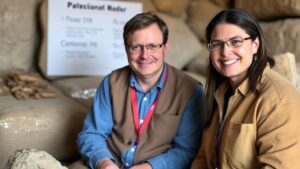Combining NOAA Shipwreck Data with Local Folklore for Artifact Discovery
Combining NOAA Shipwreck Data with Local Folklore for Artifact Discovery
This research article explores the innovative integration of NOAA shipwreck data with local folklore to enhance the discovery of underwater artifacts. By analyzing historical shipwrecks reported by the National Oceanic and Atmospheric Administration (NOAA) alongside culturally significant maritime stories from local communities, researchers can not only locate previously undiscovered shipwrecks but also gain insights into the artifacts that may accompany these sites, thereby enriching our understanding of maritime history.
Historical Context of Shipwrecks
Shipwrecks have long been a part of human maritime activity, with the United States alone witnessing numerous incidents throughout its naval history. According to NOAA, there are over 50,000 documented shipwrecks in U.S. waters, ranging from commercial vessels to military ships. One notable example is the wreck of the USS Monitor, an ironclad warship lost during a storm off Cape Hatteras, North Carolina, in December 1862.
Integrating local folklore into the research of these shipwrecks provides a unique lens through which to view maritime history. Folklore often preserves firsthand accounts of seafaring experiences, collective memories of disasters, and the cultural significance of these vessels within local communities. Local narratives, such as tales from fishermen in the Great Lakes region concerning the wrecks of the Edmund Fitzgerald or the Lady Elgin, can provide clues that help in pinpointing wreck sites that may not be cataloged in official databases.
The Role of NOAA Shipwreck Data
NOAA’s efforts in documenting shipwrecks, particularly through its Office of National Marine Sanctuaries, have been invaluable. The data provided includes:
- Geographical coordinates of reported shipwrecks.
- Type of vessel and cargo.
- Historical context including date of sinking, location, and causative factors.
This rich repository of information serves as a fundamental resource for both academic researchers and treasure hunters alike. The combination of precise coordinates and historical data enables targeted exploration, thereby increasing the likelihood of artifact recovery.
Integrating Local Folklore
Local folklore encompasses a variety of narratives, including ghost stories, local legends, and traditional maritime practices that illuminate the cultural dynamics surrounding shipwrecks. For example, the folklore of the Gulf Coast holds stories of the Cursed Ship of Mobile Bay, which is said to warn fishermen of impending storms and hazards at sea. While these stories may be shrouded in myth, they often contain kernel truths that lead researchers to explore actual shipwreck sites.
Research has shown that folklore can often reflect historical realities when analyzed critically. Anthropologist Barbara B. Smith, in her work Folk Tales as Maritime History, argues that local stories can act as informal records contributing to historical accuracy. By conducting interviews and coding tales, researchers can uncover patterns that correlate with documented shipwreck data.
Real-World Applications
The merging of NOAA shipwreck data and local folklore can lead to significant advancements in maritime archaeology and conservation. Real-world applications include:
- Enhanced Discovery: Local accounts may lead researchers to previously undocumented wreck sites, heightening the potential for archaeological finds.
- Heritage Preservation: Engaging communities with their maritime heritage can foster conservation efforts to protect archaeological sites.
- Education and Outreach: Combining scientific data with folklore allows for captivating storytelling, enhancing awareness and appreciation for maritime heritage.
Challenges and Considerations
While the combination of NOAA shipwreck data and local folklore shows promise, several challenges must be addressed:
- Data Integrity: The accuracy of local folklore can vary, with embellishments potentially clouding historical truth.
- Community Engagement: Gaining the trust and involvement of local communities is essential for accurate data collection, requiring sensitivity to cultural narratives.
- Interdisciplinary Collaboration: Successful outcomes depend on collaboration among maritime archaeologists, historians, and folklorists.
Conclusion
To wrap up, the innovative integration of NOAA shipwreck data with local folklore presents a groundbreaking approach to underwater archaeology. By harnessing the knowledge embedded within local narratives, researchers can enhance their understanding of maritime history and facilitate the discovery of significant artifacts. This interdisciplinary approach not only enriches academic inquiry but also strengthens community ties to local heritage, ultimately fostering a deeper appreciation for the maritime past.
Future research should focus on establishing frameworks for collaboration among stakeholders in maritime heritage, ensuring that both scientific and cultural aspects are respected and preserved as new skies of history are explored through the oceans depths.

